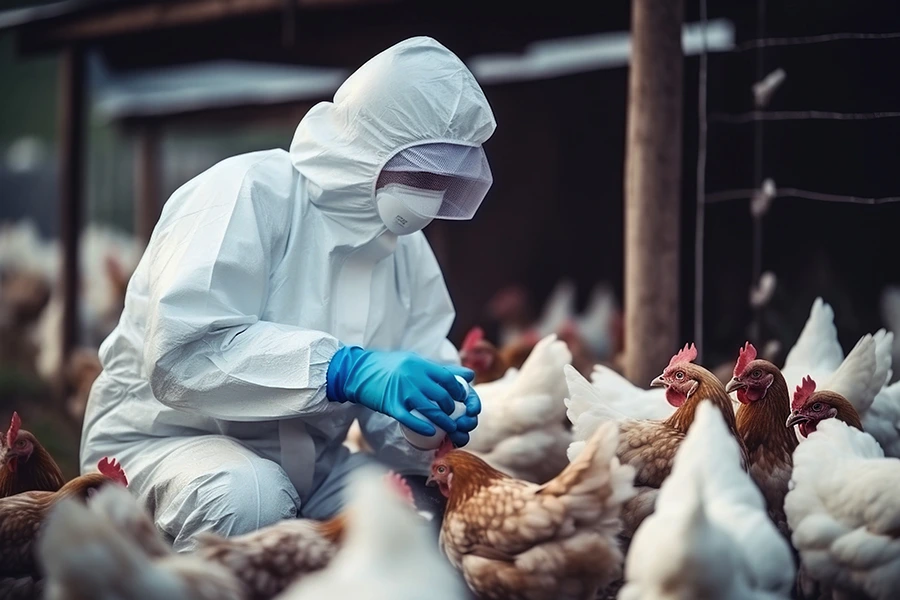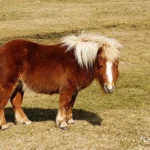
Bird flu, or avian influenza, is a viral infection that primarily affects birds but can also pose significant risks to human health. As a topic of ongoing research and public interest, understanding the intricacies of bird flu is crucial for both poultry industry stakeholders and the general public. From its historical outbreaks to its complex transmission dynamics, bird flu has garnered attention for its potential impact on global health and food security. In this blog, we will delve into 25 fascinating facts about bird flu, exploring its origins, symptoms, prevention strategies, and the ongoing efforts to manage and control this ever-evolving virus. Whether you’re a poultry farmer, a health enthusiast, or simply curious about the natural world, these insights will enhance your understanding of bird flu and its significance in today’s society.
Virus Types: Avian influenza, commonly known as bird flu, is primarily caused by influenza A viruses, which are classified into various subtypes based on the specific combinations of hemagglutinin (H) and neuraminidase (N) proteins found on the virus’s surface. There are 18 known H subtypes and 11 known N subtypes, leading to numerous combinations. The most notable strains affecting birds and humans include H5N1, H7N9, and H5N8. These viruses are capable of causing severe disease in birds and can have significant implications for public health, agriculture, and wildlife.
First Identification: The first recorded outbreak of avian influenza occurred in Italy in 1878, marking the beginning of our awareness of the disease in birds. This early identification paved the way for subsequent studies and monitoring of avian influenza viruses. Over the years, the understanding of the virus’s transmission and impact on both avian and human populations has evolved, leading to improved management practices in poultry farming and wildlife conservation.
H5N1 Strain: The H5N1 strain of bird flu gained global attention when it was first identified in humans in 1997 during an outbreak in Hong Kong. This outbreak was notable as it marked the first instance of a highly pathogenic avian influenza virus infecting humans, leading to six confirmed cases and six fatalities. The virus was linked to live poultry markets, highlighting the risks associated with close contact between humans and infected birds. This incident raised awareness of the potential for zoonotic transmission and prompted health authorities to implement stricter biosecurity measures in poultry handling.
Human Cases: As of October 2023, the World Health Organization (WHO) reported over 860 confirmed human cases of H5N1, with a mortality rate of approximately 53%. This high mortality rate underscores the seriousness of the virus when it infects humans, as the majority of cases have resulted in severe respiratory illness or death. The WHO continues to monitor these cases closely and emphasizes the importance of surveillance and rapid response to outbreaks to prevent further transmission and protect public health.
Geographic Spread: The H5N1 virus has been reported in over 60 countries across Asia, Europe, Africa, and the Middle East, demonstrating its widespread geographic distribution. Following its emergence in the late 1990s, the virus quickly spread to poultry populations in various regions, leading to significant outbreaks and culling of infected birds. The global spread of H5N1 has raised concerns about its potential to mutate and become more transmissible among humans, prompting international collaboration to track and control outbreaks.
Transmission: Bird flu primarily spreads among birds, particularly wild waterfowl, which can carry the virus without showing symptoms. However, it can also infect humans and other animals, typically through close contact with infected birds or contaminated environments. Human infections are rare, but they can occur in individuals who handle infected birds or their droppings. The virus can also spread through airborne particles, making it a concern in poultry farms and live bird markets.
Symptoms in Birds: Infected birds may exhibit a range of symptoms, including respiratory distress, lethargy, decreased egg production, and sudden death. The severity of symptoms can vary depending on the strain of the virus and the species of bird affected. Highly pathogenic strains, such as H5N1, can cause rapid and severe illness in poultry, leading to high mortality rates. Monitoring bird health and implementing biosecurity measures are crucial to prevent the spread of the virus among domestic and wild bird populations.
Economic Impact: The 2003-2004 H5N1 outbreak had a profound economic impact, with estimated losses exceeding $10 billion in affected countries. This figure includes costs associated with culling infected flocks, loss of poultry production, and trade restrictions imposed by importing countries to prevent the spread of the virus. The economic ramifications also extend to the livelihoods of farmers and workers in the poultry industry, highlighting the need for effective disease management and prevention strategies.
Vaccination: Vaccines for poultry have been developed to combat avian influenza, particularly the H5N1 strain, and are used in many countries as part of a comprehensive control strategy. Vaccination programs aim to reduce the incidence of infection in domestic birds, thereby minimizing the risk of transmission to humans. These vaccines have been shown to be effective in preventing disease and reducing viral shedding in vaccinated birds, contributing to overall flock health and biosecurity.
Wild Birds: Wild waterfowl, especially ducks and geese, are considered natural reservoirs for many avian influenza viruses, including H5N1. These birds often carry the virus without showing symptoms, which allows for the continued spread of the virus in the environment. Wild birds can transmit the virus to domestic poultry through direct contact or indirectly through contaminated water or feed. This dynamic poses a significant challenge for poultry health management, as controlling the spread of avian influenza requires monitoring both wild and domestic bird populations. Understanding the migratory patterns of these wild birds is crucial for predicting potential outbreaks and implementing effective biosecurity measures in poultry farms. Conservation efforts and wildlife management practices also play an essential role in mitigating the risks associated with avian influenza transmission from wild birds to domestic flocks.
Zoonotic Potential: Certain strains of avian influenza, particularly H7N9, have demonstrated a higher potential for zoonotic transmission to humans. First identified in China in 2013, H7N9 has caused several outbreaks, leading to over 1,600 reported human infections by 2020. The virus is typically contracted through direct contact with infected birds or contaminated environments. Unlike H5N1, which primarily affects people who have close contact with infected poultry, H7N9 has shown the ability to spread more easily among humans, raising concerns about its pandemic potential.
Surveillance: Global surveillance of avian influenza is conducted by organizations such as the World Health Organization (WHO) and the Food and Agriculture Organization (FAO). These organizations monitor outbreaks in both wild and domestic birds to track the emergence and spread of different strains. Surveillance efforts include testing birds for infection, tracking migratory patterns, and assessing the risk of transmission to humans. Early detection is crucial for implementing control measures and preventing widespread outbreaks.
H7N9 Outbreak: The H7N9 strain first emerged in China in 2013 and has since been associated with several waves of infections in humans. The virus is notable for its ability to cause severe respiratory illness, with a high fatality rate among infected individuals. Public health authorities have implemented various measures, including culling infected poultry and closing live bird markets, to control the outbreak. Despite these efforts, sporadic human cases continue to be reported, highlighting the ongoing risk posed by this strain.
Seasonality: Avian influenza outbreaks in poultry often exhibit seasonality, with increased incidence typically occurring during the winter months. This pattern is attributed to the migration of wild birds, which can introduce the virus to domestic flocks. The colder weather also facilitates the survival of the virus in the environment, increasing the likelihood of transmission. Understanding this seasonality is essential for poultry producers and public health officials to prepare for and mitigate potential outbreaks.
Culling Practices: In response to outbreaks of avian influenza, affected countries often implement culling practices to control the spread of the virus. This involves the systematic removal and destruction of infected and exposed birds to prevent further transmission within flocks and to humans. Culling is a critical component of outbreak management, but it also raises ethical and economic concerns, particularly for farmers whose livelihoods are affected by the loss of their poultry.
Biosecurity Measures: Farms implement strict biosecurity measures to prevent the introduction and spread of avian influenza. These measures include controlling access to poultry, disinfecting equipment and facilities, and monitoring bird health regularly. Farmers are encouraged to avoid contact between domestic poultry and wild birds, as well as to report any signs of illness promptly. Effective biosecurity practices are essential for protecting both animal and human health.
Symptoms in Humans: Human symptoms of bird flu can vary but typically include fever, cough, sore throat, muscle aches, and in severe cases, pneumonia or acute respiratory distress. The severity of the illness often depends on the strain of the virus and the individual’s health status. Early recognition of symptoms and prompt medical attention are critical for improving outcomes in infected individuals, as antiviral treatments are most effective when administered early in the course of the illness.
Incubation Period: The incubation period for avian influenza in humans ranges from 2 to 8 days, with most cases occurring within 7 days of exposure to the virus. This relatively short incubation period underscores the importance of rapid identification and response to potential cases, particularly in settings where there is a known outbreak. Monitoring and reporting any symptoms in individuals who have had contact with infected birds are crucial for controlling the spread of the virus.
Global Health Risk: The WHO classifies certain strains of avian influenza, such as H5N1 and H7N9, as potential pandemic threats due to their ability to mutate and spread among humans. The concern is that if these viruses acquire the ability to transmit efficiently between people, they could lead to widespread outbreaks with significant morbidity and mortality. Ongoing research, surveillance, and preparedness efforts are essential to mitigate this risk and protect public health.
Research Funding: Research on avian influenza has received substantial funding from various governments and organizations, with millions of dollars allocated annually to study its transmission, pathogenicity, and potential for zoonotic spread. This funding supports the development of vaccines, antiviral treatments, and improved diagnostic tools, as well as initiatives aimed at enhancing surveillance and response capabilities. Continued investment in research is vital for understanding and controlling avian influenza, especially in the face of emerging strains.
Survivability: Avian influenza viruses, commonly known as bird flu, exhibit a notable ability to survive in various environmental conditions. Research indicates that certain strains can remain viable for weeks, particularly in cold and wet environments. This durability poses a significant challenge for managing outbreaks, as the virus can persist in contaminated surfaces, water, and soil, thereby increasing the risk of transmission among bird populations and potentially to humans. Understanding the specific conditions that favor the virus’s survival is crucial for implementing effective biosecurity measures in both wild and domestic bird habitats.
Poultry Production: The global poultry industry is a massive sector, producing over 130 million metric tons of chicken meat annually. This substantial production volume makes it a critical area for the control and prevention of avian influenza outbreaks. The interconnectedness of poultry farms, supply chains, and markets means that an outbreak in one region can have far-reaching implications for food security and economic stability. As such, effective monitoring, vaccination, and biosecurity practices are essential to safeguard poultry health and ensure the safety of the food supply, while also protecting public health.
Public Health Guidelines: To mitigate the risk of avian influenza transmission to humans, public health organizations such as the World Health Organization (WHO) and the Centers for Disease Control and Prevention (CDC) have established comprehensive guidelines. These guidelines emphasize the importance of proper handling, cooking, and preparation of poultry products. For instance, cooking poultry to an internal temperature of at least 165°F (75°C) is crucial to inactivate the virus. Additionally, the guidelines recommend practicing good hygiene, such as washing hands thoroughly after handling raw poultry and avoiding contact with sick birds, to further reduce the risk of infection.
Monitoring Systems: In response to the threat posed by avian influenza, many countries have implemented robust monitoring systems designed for the early detection of the virus in both wild and domestic bird populations. These systems often involve surveillance programs that track the health of bird populations, laboratory testing for the virus, and reporting mechanisms for any unusual mortality events. By establishing these monitoring frameworks, authorities can quickly identify and respond to potential outbreaks, preventing the spread of the virus and protecting both animal and human health.
Future Concerns: Experts in virology and public health continue to express concerns regarding avian influenza due to its potential for mutation. While the virus primarily affects birds, there is a risk that certain strains could evolve to enhance their transmissibility among humans, leading to outbreaks that could pose significant public health threats. Ongoing research and surveillance are essential to identify any changes in the virus’s behavior and to develop effective vaccines and treatment strategies. The need for vigilance in monitoring avian influenza is underscored by past experiences with pandemics, making it a priority for health organizations worldwide.
Frequently Asked Questions about Bird Flu:
1. What is Bird Flu? Bird flu, or avian influenza, is a viral infection caused by influenza viruses that primarily infect birds. There are several strains of the virus, with H5N1 and H7N9 being the most notable for their potential to infect humans. While most bird flu viruses do not infect humans, certain strains can cause severe illness and even death in humans if transmitted.
2. How is Bird Flu transmitted? Bird flu is primarily transmitted among birds through direct contact with infected birds or their droppings, secretions, and contaminated environments. Humans can contract the virus through close contact with infected birds, handling raw poultry, or consuming undercooked poultry products. Airborne transmission is also possible in certain situations, particularly in confined spaces with high concentrations of infected birds.
3. What are the symptoms of Bird Flu in humans? Symptoms of bird flu in humans can range from mild to severe and may include fever, cough, sore throat, muscle aches, and, in severe cases, pneumonia or acute respiratory distress. Some individuals may also experience gastrointestinal symptoms. The severity of symptoms often depends on the strain of the virus and the individual’s health status.
4. How can Bird Flu be prevented? Preventing bird flu involves several strategies, including practicing good hygiene, such as washing hands after handling birds or poultry products, cooking poultry thoroughly to an internal temperature of at least 165°F (75°C), and avoiding contact with sick birds. For poultry farmers, implementing biosecurity measures, such as controlling access to farms and monitoring bird health, is crucial in preventing outbreaks.
5. Are there vaccines for Bird Flu? Yes, there are vaccines available for certain strains of bird flu, particularly for poultry. Vaccination programs are implemented in many countries to protect domestic birds from infection and to reduce the risk of transmission to humans. However, there is currently no specific vaccine approved for human use against bird flu, although research is ongoing to develop effective human vaccines.
6. What should I do if I think I have been exposed to Bird Flu? If you believe you have been exposed to bird flu, especially if you show symptoms, it is essential to seek medical attention immediately. Inform your healthcare provider about your potential exposure, as they may recommend testing and treatment. Early antiviral treatment can be effective in reducing the severity of the illness if administered promptly.
7. Can Bird Flu spread from person to person? While human-to-human transmission of bird flu is rare, it can occur in certain circumstances. Most cases of human infection have been linked to direct contact with infected birds. However, there have been isolated cases where the virus has spread between humans, raising concerns about the potential for mutation and increased transmissibility.
8. How does Bird Flu affect the poultry industry? Bird flu outbreaks can have significant economic impacts on the poultry industry, leading to loss of livestock, trade restrictions, and increased biosecurity measures. Infected flocks may be culled to prevent the spread of the virus, resulting in substantial financial losses for farmers and disruptions in the supply chain. The industry must remain vigilant and implement effective monitoring and control measures to minimize the risk of outbreaks.
9. What are the global health implications of Bird Flu? The global health implications of bird flu are significant, particularly concerning the potential for a pandemic if a highly transmissible strain were to emerge. Public health organizations, such as the World Health Organization (WHO) and the Centers for Disease Control and Prevention (CDC), continuously monitor avian influenza strains and work on preparedness plans to mitigate the impact of potential outbreaks on human health.
10. Where can I find more information about Bird Flu? For more comprehensive information about bird flu, including updates on outbreaks and guidelines for prevention, you can visit reputable sources such as the World Health Organization (WHO), the Centers for Disease Control and Prevention (CDC), and the Food and Agriculture Organization (FAO). These organizations provide valuable resources and research on avian influenza and its implications for public health and agriculture.









